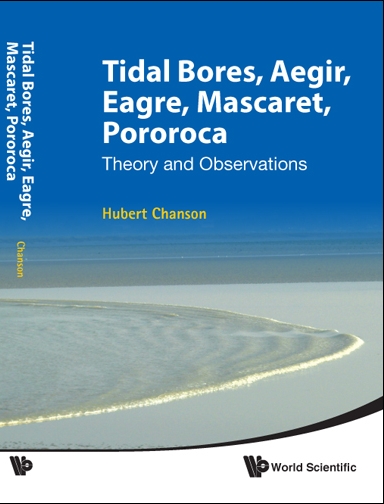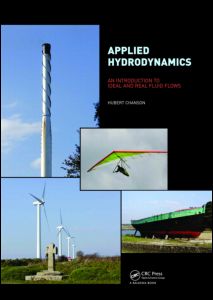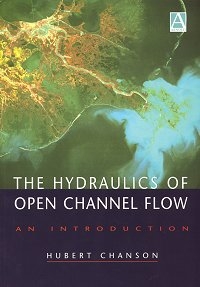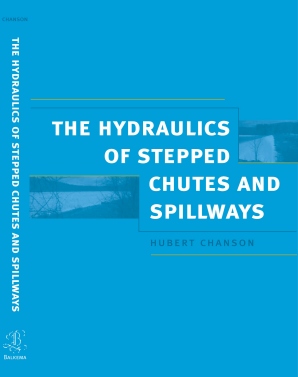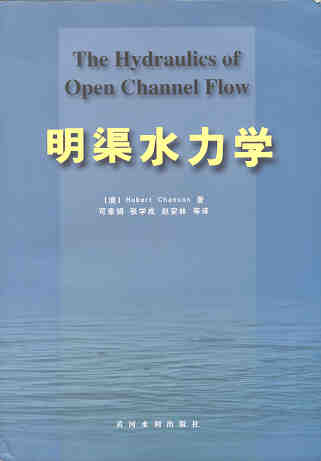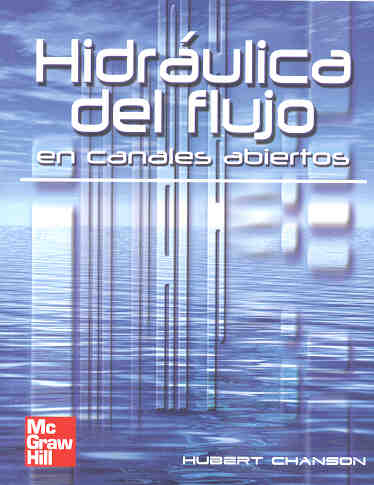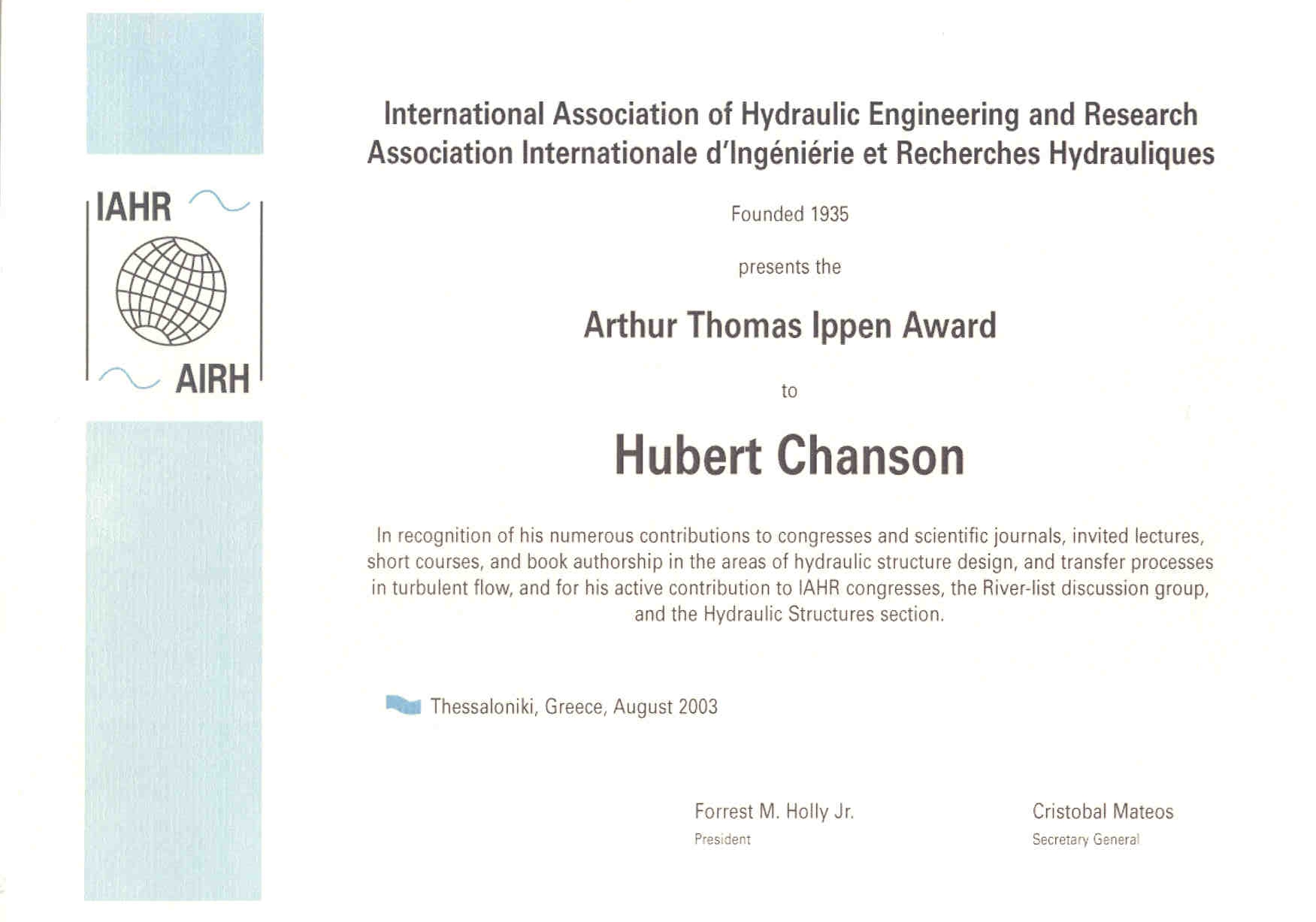Historical Development
of
Arch Dams. From Cut-Stone Arches to Modern Concrete Designs
(A revised history of arch dams)
by Hubert CHANSON (h.chanson@uq.edu.au)
and D.Patrick JAMES
M.E., ENSHM Grenoble, INSTN, PhD (Cant.), DEng (Qld),
Eur.Ing., MIEAust., MIAHR, 13th Arthur
Ippen awardee
Dept. of Civil Engrg., Univ. of Queensland, Brisbane
QLD 4072, Autralia
Dam designs may be divided into three main types : gravity
structures
relying on their weight for stability, arch structures using the
abutment
reaction forces and buttress dams. The design of an arch dam relies on
the abutment reaction forces to resist the water pressure force and it
requires advanced engineering expertise. The writers demonstrate that
the
historical development of arch dams took place in five stages: the
Roman
arch dams, the Mongol arch dam, four arch dams in the early 19th
century,
the Australian concrete arch dams and the modern arch dams of the early
20th century (CHANSON and JAMES 1998,1999).

[1] The first arch dam is probably the Roman dam at Glanum
(Saint-Rémy-de-Provence,
France), built during the first century BC to supply water to the Roman
town. Recent studies indicated that the dam was a thin arch made of cut
stones and the wall abutments were cut in the rock (AGUSTA-BOULAROT
and PAILLET 1997). The site was well selected (Photograph
beside). The writers hypothesise that the arch dam design was
introduced
because the site was favourable to a masonry dam but nearby
construction
materials were scarce. Another unusual Roman dam was the Esparragalejo
dam, near Merida (Spain). Built around the 1st century AD for
irrigation
purposes, the structure was a multiple-arch buttress dam, 5.6-m high
and
2-m thick at base with circular arches.
The arch technique was applied by the Romans to sewers, aqueducts and
bridges, although there is no evidence of scientific design rules,
Professor
C. O'CONNOR suggested that, for Roman bridges, the ratio of arch rib
thickness
to span was about 1/10 for spans less than 15-m and could be reduced
down
to 1/20 for greater spans (O'CONNOR 1993).
Interestingly
the ratio of dam wall thickness to arch curvature radius was between
1/10
and 1/7 at Glanum (i.e. close to Roman bridge dimensions).
[2] During the 13th century, the Mongols invaded and settled in Iran
where they built several large dams. Around the 14th century, they
built
also a number of arch dams (GOBLOT 1967). The
Mongol arch dams were thick arch walls significantly higher than the
Roman
dams. The first one (Kebar, AD 1300) was heightened to 26 m around AD
1600
while the Kurit dam was 60-m high before heightening. Interestingly
these
structures were used for several centuries and several dams were still
standing in the 1970s.
Some transfer of expertise on arch dam design might have taken place
from the Romans to the Iranians. After the defeat of Valerian's army in
AD 260, 70,000 men were captured and transported to Persia where they
were
forced to work. The Roman prisoners built bridge-weirs and dams in Iran
and some structures were still in use when the Mongols invaded in Iran.
As the Roman army was involved in dam construction, the Mongols might
be
aware of the Roman arch dams. Both the Roman and Mongol dams in Iran
were
milestones in arch dam development. From the 14th century up to the
beginning
of the 19th century, the arch dam development was scattered and
disparate.

[3] During the first part of the 19th century, the arch dam design
was dominated by four large structures: the Meer Allum (India), Jones
Falls
(Canada), Zola (France) and Parramatta (Australia) dams. In India, the
extra-ordinary Meer Allum (Mir Alam) dam was completed around 1804 with
a 10-Mm3 water storage capacity. The multiple-arch dam was built to
supply
water to Hyderabad and it is still in use. It consists of 21
semi-circular
vertical arches with span ranging from 21.3 to 44.8 m. The Jones Falls
dam was completed in 1831 as part of the Rideau waterway system
(Canada).
The 18.7-m high dam was a constant-radius arch wall, 8.4-m thick at
base.
The dam is still used today for hydropower and navigation purposes. The
Zola dam, was built between 1847 and 1854 for the water supply of
Aix-en-Provence,
France. It was the first arch dam design based on a rational stress
analysis
(SCHNITTER 1994). The reservoir was used as a
town water supply until 1877. Today it is still in use for flood
retention
(Photo beside). The 12.5-m high
Parramatta
dam near Sydney (Australia) wa built between 1851 and 1856. It was a
constant-radius
arch with a cylinder shape and it was heightened by 3.35-m in 1898.
All four structures were constant-radius arches built in cut-stone
masonry. They are still in use and their long-lasting operation
demonstrates
the soundness of design and the quality of the masonry construction. It
is generally believed that the thickness of cylindrical arch was
calculated
using the thin cylinder formula. It is worth noting that three dams
were
built in the British empire. Two structures were designed by Royal
Engineers
: the Meer Allum and Jones Falls dams. The writers believe that the
Royal
Engineers in India were aware of the successes of Meer Allum and Jones
Falls dams and they might have advised Australian engineers.

[4] The 75 Miles dam was built in 1880 near Warwick (QLD, Australia),
as a water supply for steam locomotives (CHANSON
1999). It was a non-reinforced concrete thick arch (Photo
beside). In 1900-1901, the dam was heightened with the addition of
three concrete buttresses. The 75-Miles dam in 1880 is the world's
oldest
concrete arch dam and it is still in use as an emergency reserve.
Completed
in 1896, Lithgow No. 1 dam (NSW, Australia) was a concrete
single-radius
thin-arch structure. In 1914 or 1915, the dam was heightened. The dam
was
disused around 1983-84 because the reservoir did not have enough
available
head to feed the new wastewater treatment plant. Lithgow No. 1 dam was
the first Australian thin-arch dam, and it is the world's oldest
concrete
thin-arch structure (CHANSON and JAMES 1998).
Two thin-arch dams, de Burgh dam
and
Barren Jack City dam (NSW, Australia), were built around 1907-1909 for
railway water supply. These were reinforced-concrete single-radius
thin-arches,
the world's oldest reinforced-concrete thin arch dams. Another
Australian
arch dam is the Junction Reefs dam completed in 1897. The multiple-arch
dam has 5 elliptical arches, each with a 8.5-m span and a 60-degrees
lean.
It was the first modern multiple-arch design.
[5] The introduction of concrete as a construction material for arch
dams marked a significant advance. Designers were able to consider
complex
curved shapes to minimise the construction material and the overall
cost.
The developments took place first in North America. The
world's oldest cupola dam is the Ithaca dam (New York, USA, 1903).
Designed to be a 27-m high structure, construction was stopped when the
dam height reached 9-m because of local opposition.
The
oldest concrete multiple arch dam was the Hume Lake dam (California,
USA
1908) built in the Sierra Nevada Mountains in 114 days ! The 206-m long
18.6-m high structure consisted of 12 circular arches (15.24-m span)
and
concrete reinforcement included old logging cables (over 12 km) and
railroad
scrap iron. The first constant-angle arch dam was completed in 1914 :
the
Salmon Creek dam (Alaska). The arch radius ranged from 44.96-m at base
to 100.9-m at crest. Another advanced design was the Coolidge dam
(Globe
Ariz., USA 1928), the first cupola-shaped multiple-arch structure.
Photographs
Photo No. 1 : Site of the Roman dam
at Glanum (Saint-Rémy-de-Provence, France). The
present
dam, les Peirou dam, was built on the foundation of the Roman arch dam
at Glanum (CHANSON and JAMES 1998b, 1999). Photograph taken in June
1998.
Photo No. 2 : Zola dam,
(Aix-en-Pr., France 1854) is an arch dam designed by Maurice ZOLA
(1795-1847),
father of the novelist Emile ZOLA (CHANSON and JAMES 1998b, 1999).
Photograph
taken in June 1998.
Photo No. 3 : 75 Miles dam, the
world's oldest concrete arch dam in 1880 shortly before completion
(Courtesy
of the MACCROSSAN family) (CHANSON and JAMES 1998b, 1999).
Photo No. 4 : De Burgh dam
(NSW, Australia 1908) is Australia's first reinforced concrete arch
dam.
Named after its designer Ernst de BURGH, it was built as a water supply
for the narrow-gauge railway line connecting Goondah NSW to the
construction
site of the Burrinjuck dam (CHANSON and JAMES 1998b).
Photo No. 5 : Junction Reefs dam
(Lyndhurst NSW, Austalia, 1897). Built between 1895 and 1897, completed
in 1897,
the Junction Reefs dam is a concrete-brick multiple arch dam (CHANSON and JAMES
1998b). There are 5 arches, with a 8.5-m span each,
sitting on 6 buttresses. The dam foundation and the outside walls are
made of
concrete. The arches and buttresses are brick works. The reservoir was
built to
supply hydropower to the mining company. Four Pelton wheels were
supplied by
the dam. The Junction Reefs dam is well-known wroldwide as a heritage
structure of international significance (WEGMANN
1922, SMITH 1970, SCHNITTER 1994). Interstingly the Junction
Reefs dam may be
compared with the Tallong dam. The Tallong dam, completed in 1883, is a
brick
buttress-slab structure, still in use. Photo
No. 1 : View from the left abutment on 28 Dec. 1997; note the
unlined rick spillway in the foreground.
Photo No. 6 : Jones
Falls dam (Canada, 1831). Designed by Colonel John BY, and built
betweeen 1828 and 1831, the 18.7 m high masonry arch dam is used to
feed the Rideau Canal linking Kingston to Ottawa. Photo No. 6.1 : View from the
left bank (Courtesy of Ken WATSON).
References
AGUSTA-BOULAROT, S., and PAILLET, J.L. (1997). "Le Barrage
et l'Aqueduc Occidental de Glanum: le Premier
Barrage-Voûte
de l'Histoire des Techniques ?" ('The Dam and Western Aqueduct of Glanum:
the Fist Arch-Dam in the History of Techniques ?') Revue
Archéologique,
No. 1, pp. 27-78 (in French).
CHANSON, H. (1998). "Extreme Reservoir Sedimentation in
Australia : a Review." Intl Jl of
Sediment Research, UNESCO-IRTCES, Vol. 13, No. 3, pp. 55-63
(ISSN 1001-6279). (Download PDF file)
CHANSON, H. (1999). "The 75-Miles Dam in Warwick : the
World's
Oldest Concrete
Arch Dam." Royal Historical Society of Queensland Journal, Vol.
17,
No. 2, pp. 65-75 (ISSN 0085 5804). (Download
PDF file)
CHANSON, H., and JAMES, P. (1998a). "Rapid Reservoir
Sedimentation of Four Historic Thin Arch Dams in Australia." Jl of
Performance of Constructed Facilities, ASCE, Vol. 12, No. 2, May,
pp. 85-92. Errata : Vol. 12, No. 3,
p.169. (download PDF file).
CHANSON, H., and JAMES, D.P. (1998b). "Historical
Development of Arch
Dams in Australia : from Advanced Designs
to Engineering Failures." Research Report CE 157, Dept.
of Civil Engineering, The University of Queensland, Brisbane,
Australia, August (ISBN 1 86499 0791). (PDF version at
EprintsUQ)
CHANSON, H., and JAMES, D.P. (1999). "Une Histoire
Revisée
des Barrages-Voûtes (de l'Antiquité à 1900)." ('A
Revised
History of Arch Dams (from Antiquity to 1900).') Annales des Ponts
et
Chaussées, Ingénieur Science Société,
Vol.
91, Sept., pp. 76-83 (ISSN 0152-9668) (in French). (Download PDF
file)
CHANSON, H., and JAMES, D.P. (1999-2000). "Railway Dams in
Australia
: Six Historical Structures." Trans. Newcomen Society,
Vol. 71, No. 2, pp. 283-303 (ISSN 0372-0187). (PDF Version at
EprintsUQ)
CHANSON, H., and JAMES, D.P. (2002). "Historical
Development of Arch
Dams : from Cut-Stone Arches to Modern Concrete Designs." Aust.
Civil Engrg. Trans., IEAust, Vol. CE43, pp. 39-56 & front
cover (ISSN 0819-0259). (PDF file at EprintsUQ).
GOBLOT, H. (1967). "Sur Quelques Barrages Anciens et la
Genèse des Barrages-Voûtes." ('On Some Ancient Dams and
the
Genesis of the Arch Dams.') Revue d'Histoire des Sciences, Tome
XX, No. 2, April-June, pp. 109-140 (in French).
JAMES, D.P., and CHANSON, H. (2000). "Cement by the
Barrel and Cask." Concrete
in Australia, Vol. 26, No. 3, pp. 10-13 (ISSN1440-656X). (PDF Version at
EprintsUQ) (Download ZIP file)
(See also http://www.engaust.com.au/magazines/cia/0900coverstory.html)
O'CONNOR, C. (1993). "Roman Bridges." Cambridge
University
Press, Cambridge, UK, 235 pages.
SCHNITTER, N.J. (1994). "A History of Dams : the Useful
Pyramids." Balkema Publ., Rotterdam, The Netherlands.
SCHULZE, O. (1897). "Notes on the Belubula Dam." Trans. Australian Institute of Mining Eng.,
Vol. 4, Paper 52, pp. 160-172 (+ 2 plates).
SMITH, N. (1971). "A History of Dams." The Chaucer
Press, Peter Davies, London, UK.
WATSON, K.W. (2000) "A History of the Rideau Lockstations"
Friends of the Rideau,
Ontario, Canada, 120 pages.
WEGMANN, E. (1922). "The Design and Construction of Dams."
John Wiley & Sons, New
York, USA, 7th edition.
Related
links
Structurae,
International Database and Gallery of Structures
{http://www.structurae.de/index_e.html}
ICOLD
(International Commission on Large Dams)
Dams Safety Committee of
New South Wales Australia
Bureau of Reclamation Concrete
Dams
US Army Corps
of Engineers Reservoirs in Pittsburgh's district
US
Army Corps of Engineers, Walla Walla district [Photographs
are
listed Here]
US Army Corps of Engineers, Portland district, Photofile
[**]
Cement by the barrel and cask {http://www.engaust.com.au/magazines/cia/0900coverstory.html}
The Rideau canal and the Jones Falls dam {http://www.rideau-info.com/} {http://www.rideau-info.com/canal/images/img-n-jonesdam1.html}
Acknowledgments
The writers acknowledge the help and assistance of a large number of
people,
including : the Australian Railway Historical Society, Warwick section;
Mr P. BRIXIE, Warwick QLD; Mr and Mrs J. CHANSON, Paris, France; Ms
CHOU
Y.H., Brisbane QLD; Mr B.S.C. HARPER, University of Melbourne VIC; Mr
Michael
N. CHRIMES, Libarian, Institution of Civil Engineers, London, UK; Mr I.
HOLT, Lithgow Historical Society NSW; Professor C. O'CONNOR, Brisbane
QLD;
Mr J.L. PAILLET, CNRS-IRAA, France; Queensland Railways, Historical
Centre
QLD; Mr Michael ROBERTSON, Warwick QLD; Mr P. ROYET, CEMAGREF,
Aix-en-Provence,
France; Ken WATSON, Canada; Professor R.L. WHITMORE, Brisbane QLD.
License

This work is licensed under a Creative Commons
Attribution-NonCommercial 3.0 Unported License.
Hubert CHANSON
is a Professor in Civil Engineering,
Hydraulic Engineering and Environmental Fluid Mechanics at
the University of Queeensland,
Australia. His research interests include design of hydraulic
structures, experimental investigations of two-phase flows, applied
hydrodynamics, hydraulic engineering, water quality modelling,
environmental fluid mechanics, estuarine processes and
natural resources. He has been an active consultant for both
governmental agencies and private organisations. His publication record
includes over 620 international refereed papers and his work was cited
over 3,700 times (WoS) to 5,600 times (Google
Scholar) since 1990.
Hubert Chanson is the
author
of several books : "Hydraulic
Design
of
Stepped Cascades, Channels, Weirs and Spillways" (Pergamon, 1995), "Air Bubble Entrainment in Free-Surface
Turbulent Shear Flows" (Academic
Press, 1997), "The Hydraulics of
Open Channel Flow : An Introduction" (Butterworth-Heinemann, 1st
edition 1999, 2nd editon 2004),
"The Hydraulics of Stepped Chutes and
Spillways" (Balkema, 2001), "Environmental Hydraulics of
Open Channel
Flows" (Butterworth-Heinemann,
2004), "Applied
Hydrodynamics: an Introduction of Ideal and Real Fluid Flows" (CRC Press, 2009),
and "Tidal Bores,
Aegir, Eagre, Mascaret, Pororoca: Theory And Observations" (World
Scientific, 2011). He
co-authored two further books "Fluid
Mechanics
for Ecologists" (IPC Press,
2002) and "Fluid Mechanics for Ecologists. Student Edition" (IPC, 2006). His textbook "The
Hydraulics of Open Channel Flows : An
Introduction" has already been translated into Spanish (McGraw-Hill Interamericana)
and Chinese (Hydrology Bureau of Yellow River Conservancy
Committee), and the second
edition was published in 2004. In 2003, the IAHR
presented him with the 13th Arthur Ippen
Award for outstanding
achievements in hydraulic engineering. The American Society of Civil
Engineers, Environmental and Water Resources Institute (ASCE-EWRI)
presented him with the 2004 award for the Best Practice paper in the
Journal of Irrigation and Drainage Engineering ("Energy
Dissipation and Air Entrainment in
Stepped Storm Waterway" by Chanson and Toombes 2002). Hubert
Chanson edited further several books : "Fluvial,
Environmental and
Coastal Developments in Hydraulic
Engineering" (Mossa, Yasuda & Chanson 2004, Balkema), "Hydraulics.
The Next
Wave" (Chanson & Macintosh 2004, Engineers
Australia), "Hydraulic
Structures: a
Challenge to Engineers and Researchers" (Matos & Chanson 2006, The University of Queensland), "Experiences
and Challenges in Sewers:
Measurements and Hydrodynamics" (Larrate & Chanson 2008,
The University of Queensland),
"Hydraulic
Structures: Useful
Water Harvesting Systems or Relics?" (Janssen & Chanson 2010,
The University of Queensland),
"Balance and
Uncertainty: Water in a Changing World" (Valentine et al. 2011, Engineers Australia).
He chaired the Organisation of the 34th
IAHR World Congress held in Brisbane, Australia between 26
June and 1 July 2011.
His Internet home page is http://www.uq.edu.au/~e2hchans.
He also developed a gallery of photographs website {http://www.uq.edu.au/~e2hchans/photo.html}
that received more than 2,000 hits per month since inception.
More pictures of arch dams are
here
...
Best educational resource on the Web in
Lightspan's
StudyWeb®,
Arts:Architecture:Buildings & Projects:Dams 
TECHNICAL INTERNET RESOURCES
More about timber crib weirs
...
More about steel
dams ... More about engineering
failures ...
More about rubber dams ...
More about Air entrainment on chutes spillways
...
More about the Formal Water Garden
....
More about rapid reservoir sedimentation in
Australia
...
More about Minimum Energy Loss culverts
.. More about Minimum Energy
Loss weirs ...
More about Embankment
overflow stepped spillways: earth dam spillways with precast concrete
blocks...
This page was visited : 20,903
times between 12-04-2000 and June 2012.
Last updated on 28/01/2013
